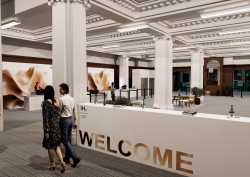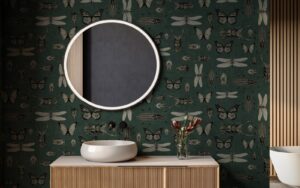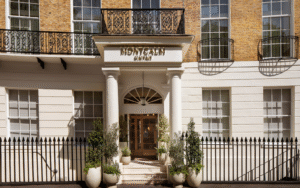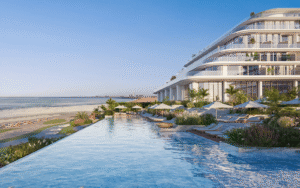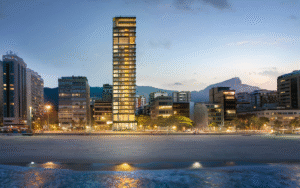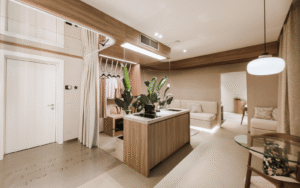The design studio THDP has designed and renewed 12 luxury apartments with a ‘microlocal language’ in the heart of Venice Italy…
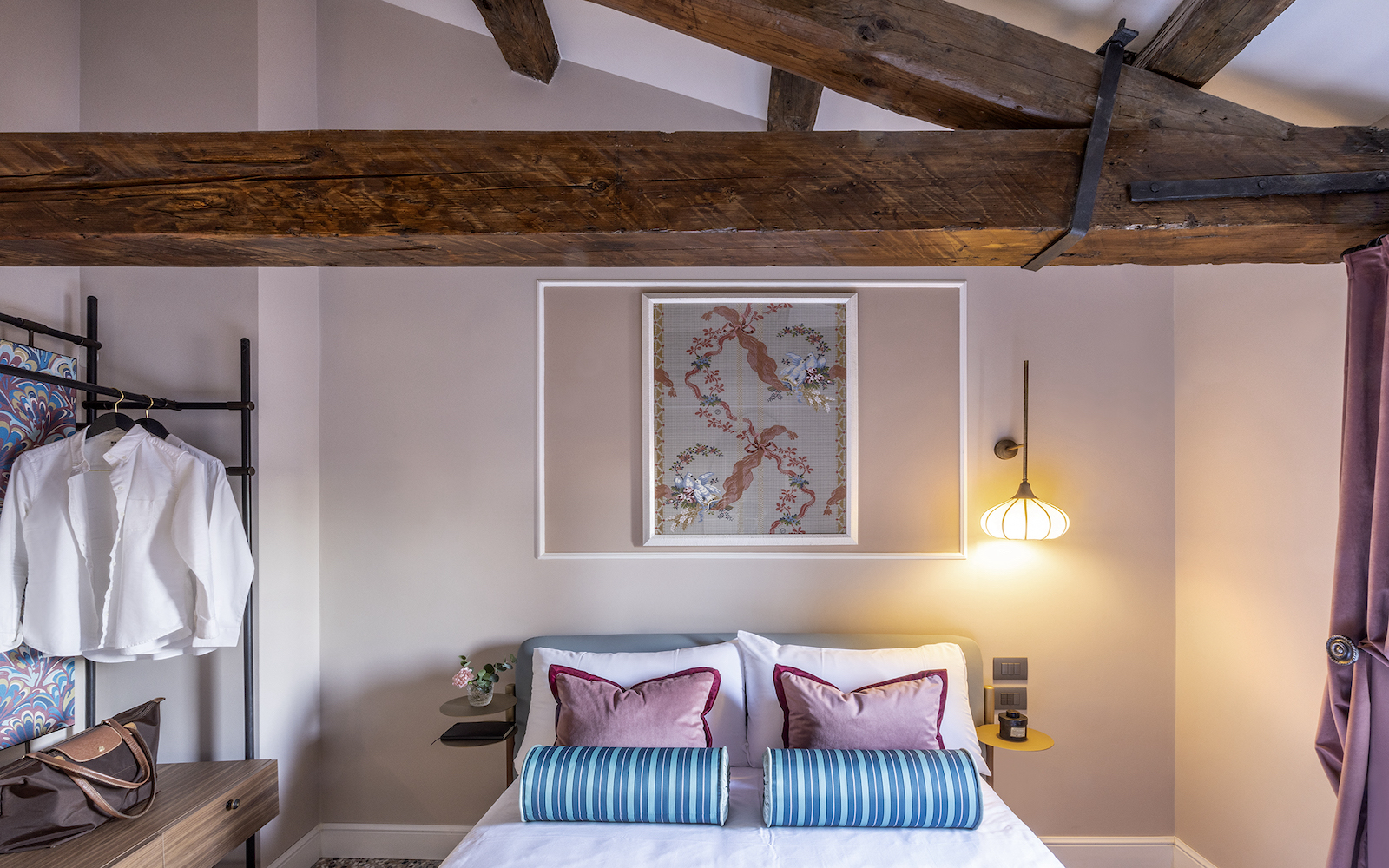
Located in the heart of the San Marco district in Venice, between Piazzo San Marco and Rialto Bridge, 12 apartments have been sensitively restored by design studio THDP.
The building itself was the first source of inspiration for the design studio. Although more contemporary than other Palace’s overlooking the Grand Canal, the facade still displays striking historical features. The mullioned windows, arches and shutters remain and have been painstakingly preserved by the design studio.

Image credit: Giorgio Baroni
Although ‘redesigned’, many of the original features, such as the stairwell, steps and railings, remain untouched, resulting in a beautiful new-meets-old aesthetic and feel.
Bringing optimum light into the palazzo was of utmost importance. Over the staircase, the skylight has been restored and on the rooftop terrace, the decorated glass of the three-mullioned windows has been repaired. Hung in the centre of the stairwell’s vast skylight is a chandelier, printed in fabric by Fortuny; when illuminated, they leave a mesmerising effect on the floor below. Despite undergoing repair, the marble-effect marmorino walls and stairs have been left with signs of wear, reflecting the building’s rich past. Protecting the marmorino below, a dark magenta runner is fitted on the staircase, incorporating the colours of marmorino, and finished with brass rods.
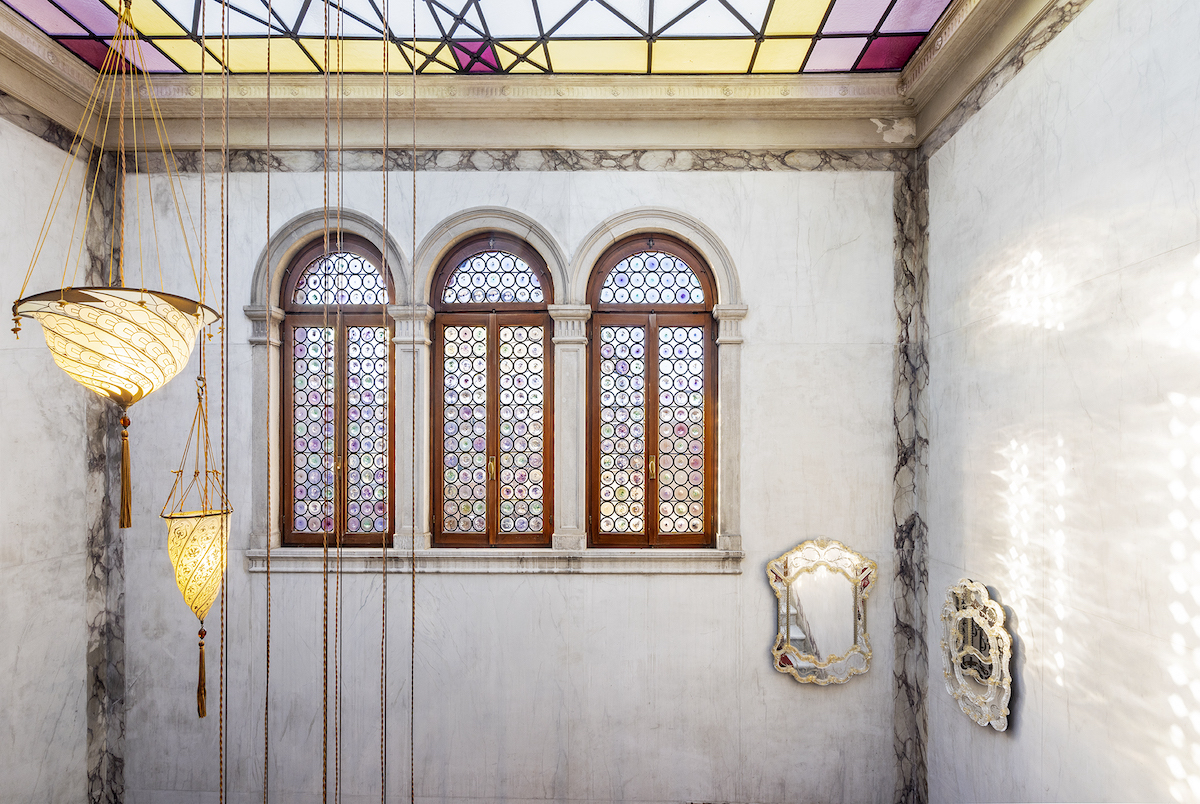
Image credit: Giorgio Baroni
On the ground floor, connecting both entrances into the building, is a small lobby. The unique waiting area features outdoor furnishings (as a high-tide precaution), and acts as a small shared terrace. The room’s decor is inspired by the turquoise Venetian waters and the colours that decorate the hotel’s exterior.
Inside, each apartment features an entrance hallway; a living room/kitchen area; two bedrooms (one of which is fitted with an ensuite) and two bathrooms.
The style of the living rooms is modern yet ornate, with neutral walls and furnishings that feature mustard, gold, teal and magenta accents. The purpose of this colour scheme is to create a tranquil environment with a lighter palette, whilst also expressing the richness of classic Venetian interiors with some vibrant features. The typically Venetian cone-shaped fireplaces, for example, have been carefully reconstructed to their original state, made possible by the discovery of an old photograph found by the interior designers themselves.
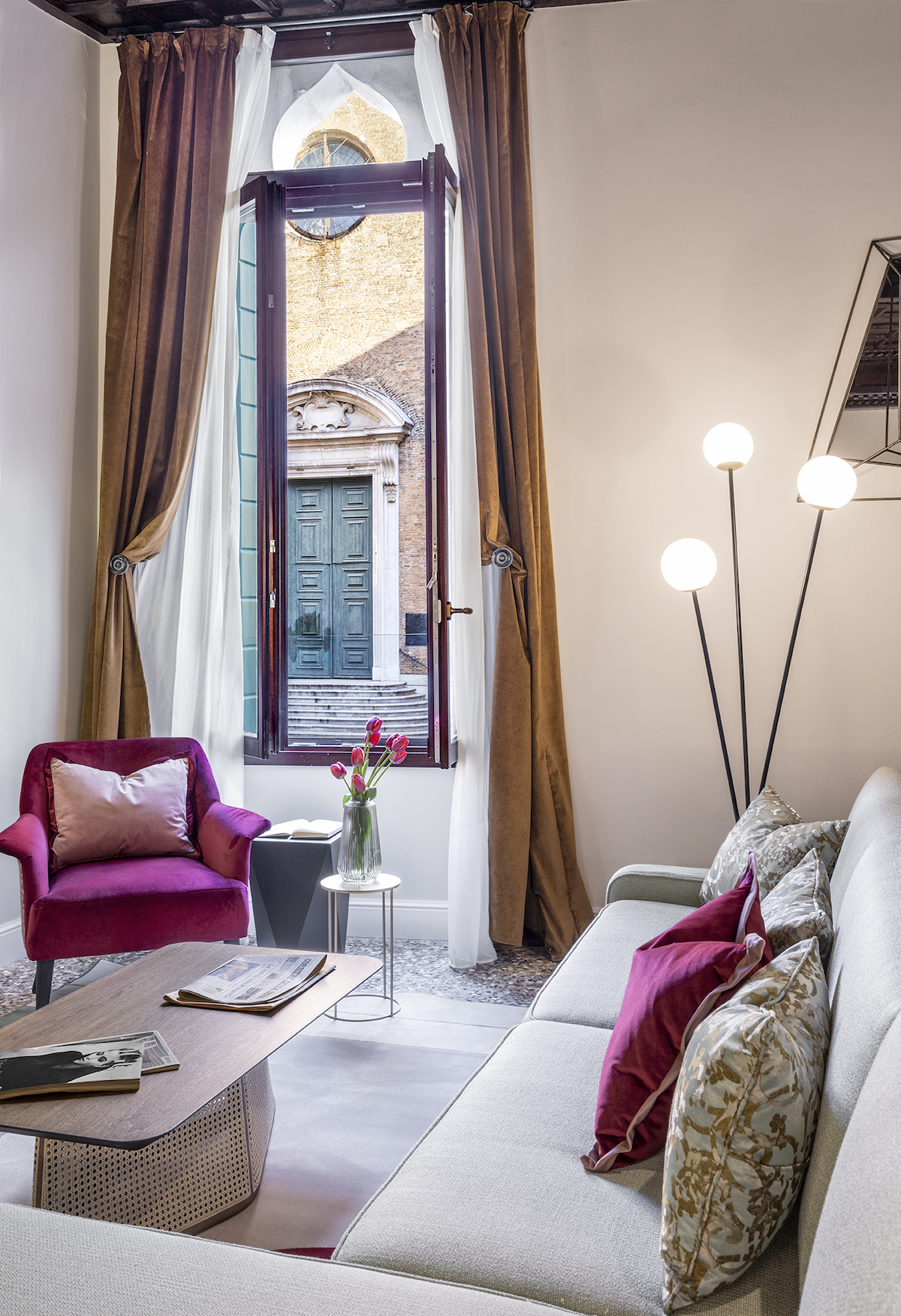
Image credit: Giorgio Baroni
With a focus on Italian design, much of the decor has been sourced from Veneto or the local area. Notable brands include Miniforms, Rubelli, Cantori, Vibieffe, Bolzan, Italamp, Siru, Flukso, Besana, Zucchetti, Florim.
The wall colour in the bedrooms recall Venice’s water, which is contrasted against the rust created on the metal portals when corroded. For the beds, a quilted, padded headboard with most of them featuring integrated brass tables, will overlook each residential-style Bolzan bed.
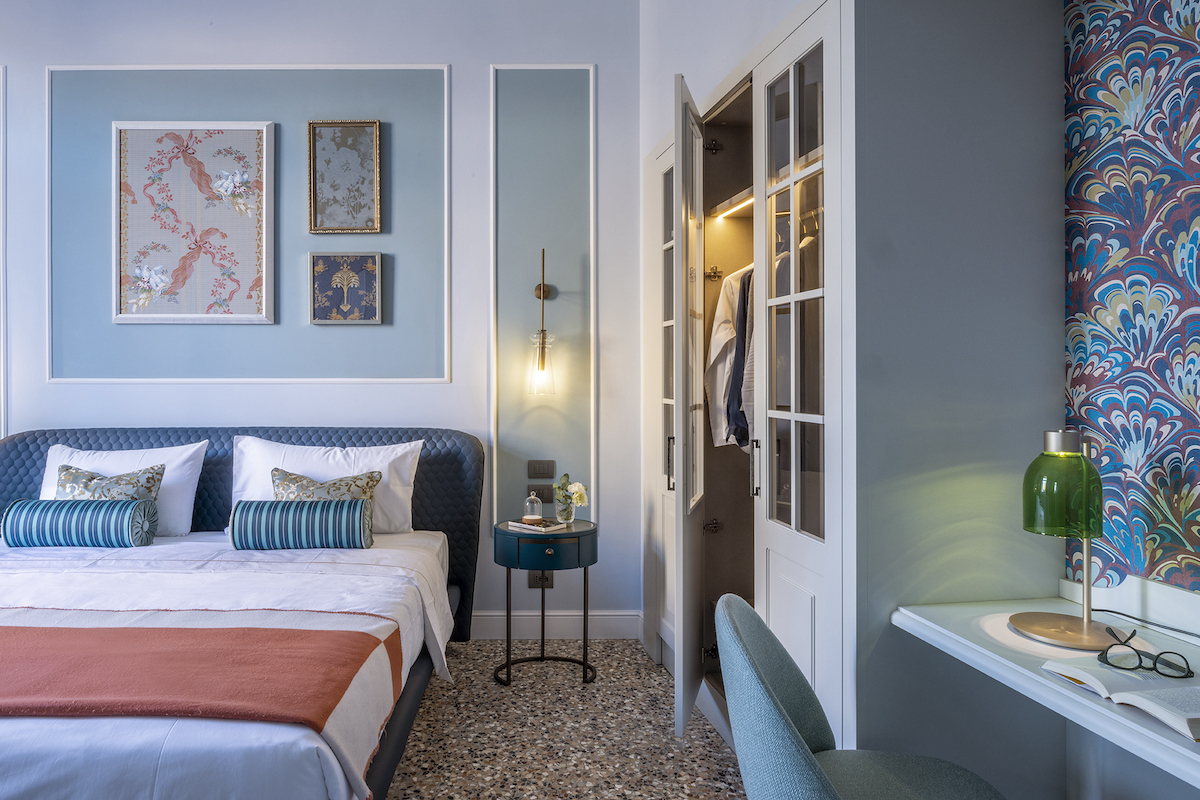
Image credit: Giorgio Baroni
The wardrobes feature glass panes opening into a wallpaper lined closet. The wallpaper features a marbled paper-effect digital print, a Turkish technique brought to Venice by recently deceased Venetian artist Alberto Valese, who founded a small shop in Campo Santo Stefano.
The kitchens have a more minimalistic design, with dark green handle-less doors designed by Fenix, that feature grooves and a black plinth.
The entrance hallway features an elegant wallpaper framed with white molded profiles, produced by Orac Decor. For the more decorative elements, accessories by Les Ottomans and Ar- cade Murano have been selected, as well as Murano mirrors by Barbini and a console with a dark green crackle effect top by Cantori.
In the bathrooms, the classical Venetian style meets modern materials and sanitation. The colour palette recalls 18th-century wooden furnishings with the use of pastel colours. The wall cladding is by Florim; a stoneware created with high-precision technology that is embossed with a loomed fabric from the Rubelli archive collection. Florim have also designed the floor and wall coverings, made in from porcelain and adorned with a seeded effect.

Image credit: Giorgio Baroni
The rooftop suite features a terrace, constructed as an extension of the living area. Overlooking the building’s interior, the balcony offers a breathtaking view over Venice’s rooftops, providing some escape from the bustling streets below.

Image credit: Giorgio Baroni
With sustainability in mind, the aim of the project was to involve local companies, reflecting the high quality of Italian-made produce and the knowledge of Venetian artisans. The companies selected represent THDP’s vision, perfectly combining classic and contemporary design.
> Since you’re here, why not read our review of Hilton Molino Stucky Venice after its latest renovation?
Main image credit: Giorgio Baroni







